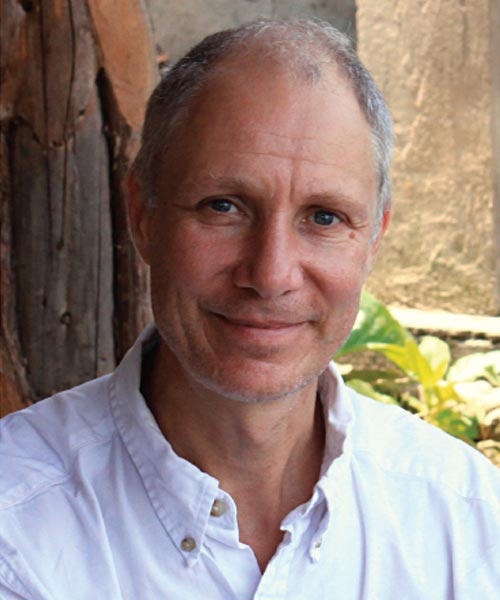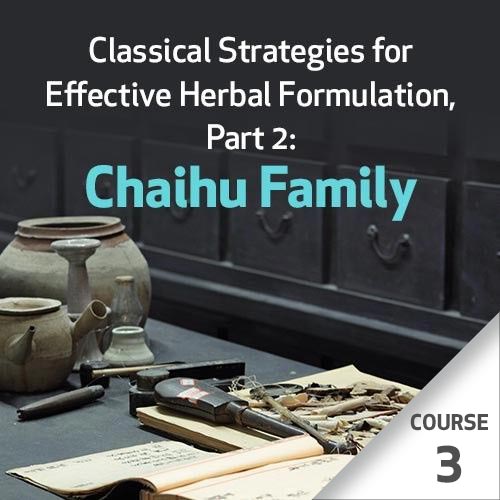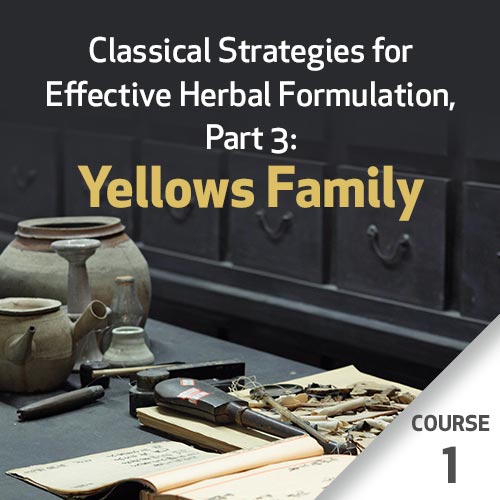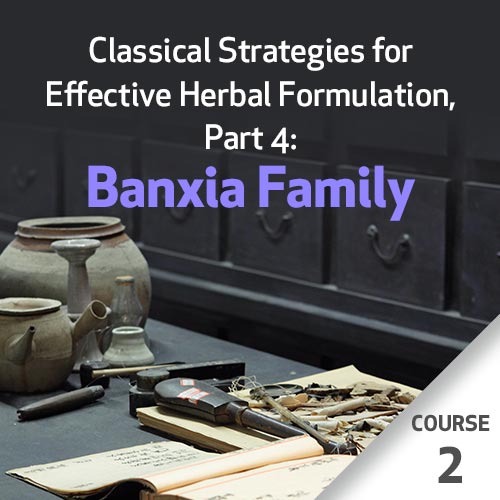Course Overview
Dr. Heiner Fruehauf's master class on Chinese herbal medicine deepens the lifelong learner’s mastery of herbal prescribing by rooting their understanding in classical principles and practices. It accommodates the needs and interests of all levels, from students of Chinese medicine and newer practitioners to seasoned practitioners who are ever-refining their capacity to successfully treat any condition presenting in the clinic.
For each of eight major herb families, Heiner describes the energetic properties of the lead herb, common herb pairs, and the major herbal formulas. Case examples are presented to provide a clinical context for learning the indications for particular formulas within each family. With this base of knowledge, practitioners can stand on firm ground while being flexible in their ability to design herbal treatments that effectively treat the complex patterns manifesting in our increasingly out-of-balance world.
In the first session devoted to the Danggui formula family, Heiner discusses the nature of Danggui as a chief herb, and introduces representative formulas. He discusses their historical context, dosages, formula architecture, therapeutic actions, indications, and clinical applications. The focus is on Danggui San, Danggui Shaoyao San, Jiao Ai Tang and Wenjing Tang. Case studies and a discussion of Moon Pearls are used to explain how to modify/combine formulas to address specific presenting patterns.
Objectives
-
Describe the energetic properties and actions of Danggui as a chief herb. Include a discussion of the Jueyin system and associated disorders.
-
Discuss and compare Danggui San, Danggui Shaoyao San, Jiao Ai Tang, and Wenjing Tang, addressing historical context, structure (including any common herb pairings), dosages, indications, typical applications and case examples.
-
Of the Danggui formulas discussed, explain the distinguishing features enabling you to choose the most appropriate remedy for common presenting patterns.
-
Describe how to craft modifications of Danggui formulas and/or suggest formula combinations that will achieve a desired therapeutic effect for unique presenting patterns.
Outline
0 hrs - 30 min
Heiner explores the Danggui family of formulas. He includes a historical context and the nature of the herb, classical sourcing and how processing the herb differently can change the outcome of the formula actions and treatments.
30 min - 1 hrs
Heiner highlights common herb pairings, including with Baishao and Chuanxiong. The focus is on Danggui San and Danggui Shaoyao San, including a historical context, formula structure, indications, dosages, applications and case examples.
1 hrs - 1.5 hrs
The focus is on Jiao Ai Tang. He addresses the historical context, structure, and applications. Heiner discusses how to modify Danggui formulas. He uses Moon Pearls as an example remedy to illustrate how to combine formulas with Danggui.
1.5 hrs - 2 hrs
Heiner continues the exploration of the Danggui family of formulas. The focus is on Wenjing Tang. He addresses the historical context, structure, dosages, indications, typical applications and case examples.
2 hrs - 2.5 hrs
The final 30 minutes will be devoted to a question and answer period. Questions will be selected from those posted in the Zoom chat based on relevance for the whole group.
Reviews
-
Milissa G. (United States of America)
As always I truly enjoy Henier's deep dive into this field of knowledge as he shares his many years of study and experience, not only giving us useful clinical tools but inspiration of thought that never fails to re-spark my interest in Chinese medicine.
Reviews
As always I truly enjoy Henier's deep dive into this field of knowledge as he shares his many years of study and experience, not only giving us useful clinical tools but inspiration of thought that never fails to re-spark my interest in Chinese medicine.
Milissa G. (United States of America)
Teacher
Heiner Fruehauf
Heiner Fruehauf is the Founding Professor of the College of Classical Chinese Medicine at National University of Natural Medicine (NUNM) in Portland, Oregon. As a practitioner, Dr. Fruehauf focuses on the complementary treatment of difficult and recalcitrant diseases, including cancer, chronic respiratory and digestive disorders, and inflammation of the nervous system.
Disclaimers
-
Accessing Your Course
After checking out, your email address will be sent to Net of Knowledge securely and you will gain instant access to your course. If you do not have a Net of Knowledge account yet, one will be created for you automatically and you will receive an email with a link to set up your password. Log in to your account at netofknowledge.com and start learning!
-
Unlimited Access & CEUS
You will have unlimited access to this course for as long as it is on Net of Knowledge, so that you can keep reviewing and learning from it over the years.
CEU requirements must be completed within 1 year from the purchase. During this time, you must view the training and complete any required documents to get your certificate. You must also print and save your certificate for your own records.
-
Cancellation Policy
Please note we do not offer refunds for our recorded online courses/webinars.
-
Note
This recording is available in an online format only; you will not receive a DVD or physical copy of the recording – it is only available to watch as a course to watch on the internet through your online account.





















